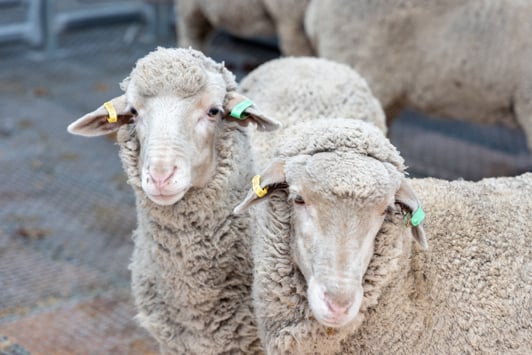Western Australia has a comprehensive, mandatory livestock ownership, identification and movement system.
Livestock owners, including small landholders and non-farming property operators must register and adhere to identification and movement requirements, even if the livestock are kept as pets.
All livestock owners within WA must be registered as an owner of stock and ensure their stock is identified and moved in accordance with the Biosecurity and Agriculture Management (Identification and Movement of Stock and Apiaries) Regulations 2013.
The following animals are considered livestock under the regulations:
- cattle and buffalo
- sheep and goats
- pigs
- horses (ponies, donkeys, hybrids)
- deer
- South American camelids (alpaca, llama, vicuna)
- camels
- poultry, emu and ostrich owners and related abattoirs
Poultry includes chickens, turkeys, geese, ducks, guinea fowls, quails, pigeons, pheasants and partridges.
Why traceability matters
Livestock traceability is the first step in good biosecurity and is a key part of everyday, sound farm management practices. It's essential to assist with disease management, food safety and to maintain the integrity of products to be able to access export markets. It also allows for livestock to be traced for residue purposes and deters stock theft.
The department assists owners in understanding and complying with their obligations outlined within the Regulations. If you're an owner of livestock, you have a responsibility to ensure you meet and maintain these requirements.
Steps to take
The department's Brands Registration Office processes ownership registrations and allocates a Property Identification Code (PIC) to indicate who owns the animals and where they are kept. A PIC card is then issued and mailed to the registered owner, listing the property(ies) where the owner has nominated to run stock and the allocated identifiers for use with their stock including stock brand, earmark and/or pig tattoo.
All registered owners, PICs and stock brands in WA are publicly recorded in Stock Brand and PIC Register.
See Ways to Register below, or see the Livestock owner and beekeeper registration page.
Identification of livestock is required by law and assists in providing traceability as they move from property to property. There are various livestock identifiers available and each species has different identification requirements.
Further information on each species is outlined below.
Whenever livestock are moved off a property livestock movement documentation such as a waybill, national vendor declaration (NVD)/waybill, PigPass NVD/waybill or equivalent is required for most species.
This includes livestock being moved to an agistment or to a different PIC under the same ownership. Exemptions apply to specific species and when livestock is moved between properties that share the same PIC. In such cases, the owner may transport the stock with their PIC card or a fully scanned and printed copy of their current PIC card, rather than completing a NVD/waybill.
For more information on documentation required when moving livestock off a property see the information relevant to each species below.
When moving cattle, buffalo, sheep or goats (movement between PICs), you are responsible for updating movement data on the NLIS database.
If you purchase livestock through an agent, it's important to ask if they are completing the upload transfer for you and request the NLIS upload number, which is your receipt to prove the transfer has been done.
If buying or moving pigs, you must record this on the PigPass database, which automatically updates the NLIS database.
For more information on documentation required when NLIS recording, see the information relevant to each species below.

